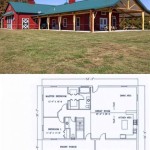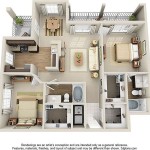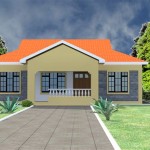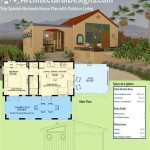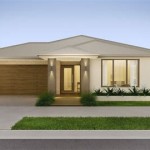Here's an article focusing on simple country house plans, adhering to your specifications:
Simple Country House Plans: A Guide to Rustic Charm and Practical Living
Country house plans evoke a sense of tranquility, connection to nature, and a simpler way of life. They prioritize comfort, functionality, and aesthetics that resonate with rural settings. These plans often incorporate natural materials, expansive windows to capture scenic views, and designs that blend seamlessly with the surrounding landscape. Understanding the core elements of simple country house plans is crucial for anyone considering building or renovating a home in a rural environment.
The term "simple" in this context refers primarily to the architectural complexity and the overall footprint of the house. While country homes can range from grand estates to modest cottages, simple country house plans focus on efficiency and practicality. This efficiency translates to lower building costs, reduced maintenance, and a more manageable living space, particularly suitable for smaller families or individuals seeking a peaceful retreat.
Key factors influencing the selection of a simple country house plan include the specific geographical location, the prevailing climate, the homeowner's lifestyle, and budgetary constraints. A plan that works well in a warm, arid climate might be entirely unsuitable for a cold, mountainous region. Similarly, individuals who frequently entertain guests will require different spaces and layouts compared to those who prioritize solitude and self-sufficiency.
Understanding the Defining Characteristics
Country house plans, even the simplest ones, possess distinct characteristics that set them apart from other architectural styles. These characteristics frequently revolve around maximizing natural light, incorporating natural materials, and creating a warm, inviting atmosphere.
One of the hallmark features of country homes is the abundance of natural light. This is achieved through the strategic placement of large windows, skylights, and French doors. These openings not only flood the interior with sunlight but also provide panoramic views of the surrounding landscape. The orientation of the house is carefully considered to optimize solar gain during the winter months and minimize overheating during the summer.
Natural materials play a pivotal role in creating the rustic charm associated with country homes. Wood, stone, and brick are commonly used for both structural elements and decorative features. Exposed beams, hardwood floors, stone fireplaces, and brick accents contribute to the overall warmth and character of the interior. These materials not only enhance the aesthetic appeal but also possess inherent durability and longevity.
The creation of a warm, inviting atmosphere is paramount in country house design. This is often accomplished through the use of soft color palettes, comfortable furnishings, and thoughtful detailing. Fireplaces serve as focal points in living rooms and bedrooms, providing both warmth and ambiance. Open floor plans encourage social interaction and create a sense of spaciousness. Covered porches and patios extend the living space outdoors, allowing residents to fully appreciate the surrounding environment.
Beyond these aesthetic elements, the layout of a simple country house plan often prioritizes functionality. Mudrooms provide a practical space for removing dirty shoes and outerwear before entering the main living areas. Pantries offer ample storage for food and supplies. Laundry rooms are conveniently located near bedrooms or bathrooms. These functional spaces contribute to the overall efficiency and livability of the home.
Exploring Different Styles Within Simple Country House Plans
While the overall theme is "country," various sub-styles can be incorporated into simple country house plans, each with its own unique characteristics and appeal. Understanding these styles can help homeowners narrow down their preferences and choose a plan that best reflects their personal taste.
The farmhouse style is perhaps the most iconic type of country house plan. Farmhouses typically feature gabled roofs, wide porches, and simple, symmetrical facades. Interiors often incorporate shiplap walls, reclaimed wood, and vintage-inspired fixtures. The emphasis is on functionality and practicality, with large kitchens, comfortable living spaces, and ample storage. Farmhouses often feature a connection to the outdoors, with gardens, orchards, and ample space for livestock.
Cottage style homes are characterized by their smaller size, cozy interiors, and charming details. They often feature steeply pitched roofs, dormer windows, and decorative trim. Cottage interiors typically incorporate natural materials, such as wood and stone, and are decorated with comfortable furnishings and personal touches. Cottage style homes are well-suited for smaller families or individuals seeking a peaceful retreat.
Ranch style homes, while not traditionally associated with country living, can be adapted to fit the rural aesthetic. Ranch homes are typically single-story structures with open floor plans and attached garages. They offer easy accessibility and are well-suited for individuals with mobility issues. To achieve a country look, ranch homes can be clad in natural materials, such as wood siding or stone veneer, and can incorporate features like covered porches and large windows to take advantage of the surrounding views.
Cabins represent another subset, emphasizing simplicity and connection with nature. Log cabins, in particular, are a quintessential country image. These structures use natural materials like wood logs and stone, often featuring exposed beams and rustic finishes. Cabin plans often prioritize functionality over ornamentation, offering a straightforward layout with a focus on core living spaces such as a central fireplace and a communal kitchen area.
Considerations for Practical Implementation
Selecting a simple country house plan is just the first step. Successfully implementing the plan requires careful consideration of various practical factors, ranging from site selection to construction materials and energy efficiency.
Site selection is crucial for any home building project, but it is particularly important for country homes. The ideal site should offer access to essential utilities, such as water and electricity, while also providing privacy and scenic views. The topography of the land should be carefully considered to minimize excavation costs and ensure proper drainage. Soil testing is essential to determine the suitability of the site for building and to identify any potential foundation issues. Local zoning regulations and building codes should be thoroughly researched to ensure compliance.
The choice of construction materials can significantly impact the cost, durability, and energy efficiency of the home. Natural materials, such as wood and stone, are often preferred for country homes due to their aesthetic appeal and environmental benefits. However, these materials can be more expensive than synthetic alternatives. Sustainable building practices, such as using recycled materials and incorporating energy-efficient windows and insulation, can help to minimize the environmental impact of the construction process and reduce long-term operating costs.
Energy efficiency is a critical consideration for any modern home, and country homes are no exception. Proper insulation, energy-efficient windows and doors, and high-efficiency heating and cooling systems can help to reduce energy consumption and lower utility bills. Renewable energy sources, such as solar panels and geothermal heating, can further reduce reliance on fossil fuels and promote sustainability. The orientation of the house should be carefully considered to maximize solar gain during the winter months and minimize overheating during the summer.
Furthermore, accessibility should be a factor, especially if the intention is for long-term residence. Features such as a single-story layout or ramp access can ensure the home remains comfortable and navigable throughout different life stages.
Finally, landscaping plays a significant role in integrating the house with the surrounding environment. Native plants should be used to minimize water consumption and support local ecosystems. Gardens, orchards, and other outdoor spaces can provide fresh produce and recreational opportunities. Thoughtful landscaping can enhance the aesthetic appeal of the home and create a seamless transition between the interior and exterior spaces.
In conclusion, simple country house plans provide a pathway to building a home that reflects the values of tranquility, connection with nature, and practical living. Careful planning, attention to detail, and a commitment to sustainable practices are essential for creating a country home that is both beautiful and functional.

Beautiful Small Country House Plans With Porches Houseplans Blog Com

House Plan 1776 00105 Country 1 611 Square Feet 3 Bedrooms 2 Bathrooms Building Plans Craftsman

New Tiny House Plans Blog Eplans Com

Beautiful Small Country House Plans With Porches Houseplans Blog Com

House Plan 1776 00108 Country 1 035 Square Feet 3 Bedrooms 2 Bathrooms Plans Small Simple

11 Amazing Rustic Farmhouse Plans For Tight Budget Craft Mart

Dream Country House Plans With Style

Country House Plans The Plan

Our Best Tiny Country House Plans And Small Designs

Plan 85250ms 3 Bed Exclusive Country Home With A Modern Flair House Plans Simple
Related Posts

